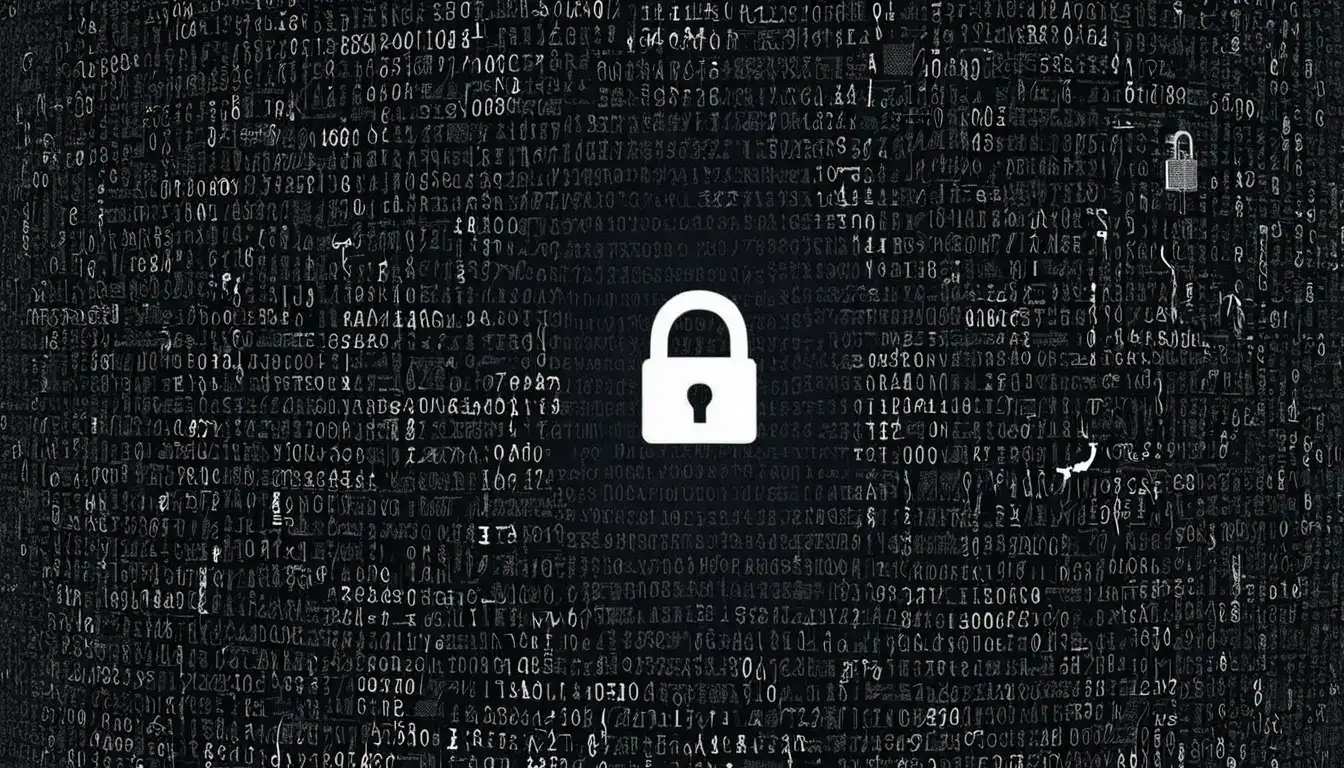Data Security in the Digital Era: Challenges and Solutions
Emily Willis

Photo: Data Security in the Digital Era: Challenges and Solutions
In today's digital age, data security has become a paramount concern for individuals and organizations alike. As we increasingly rely on digital platforms for communication, transactions, and storage of sensitive information, protecting this data from unauthorized access and breaches is more critical than ever. This article delves into the challenges and solutions associated with data security in the digital era, offering insights into how we can safeguard our digital lives.
The Importance of Data Security
Data security involves protecting digital information from unauthorized access, corruption, or theft throughout its lifecycle. This includes personal data, financial information, intellectual property, and confidential business details. The consequences of data breaches can be severe, leading to financial losses, legal repercussions, and damage to reputation. Therefore, understanding and implementing robust data security measures is essential.
Challenges in Data Security
Cyberattacks
One of the most significant challenges in data security is the prevalence of cyberattacks. Cybercriminals use various methods, such as phishing, malware, ransomware, and denial-of-service (DoS) attacks, to gain unauthorized access to data. These attacks can result in data theft, financial loss, and disruption of services.
Human Error
Human error is another common cause of data breaches. Employees may inadvertently share sensitive information, fall for phishing scams, or fail to follow security protocols. Training and awareness programs are crucial to minimize human error and improve overall data security.
Weak Passwords and Authentication
Weak passwords and inadequate authentication methods are significant vulnerabilities. Many users still use easily guessable passwords or reuse the same password across multiple platforms. This makes it easier for cybercriminals to gain access to sensitive data. Implementing strong, unique passwords and multi-factor authentication (MFA) can mitigate this risk.
Outdated Software and Systems
Using outdated software and systems can expose organizations to security vulnerabilities. Cybercriminals often exploit these weaknesses to gain unauthorized access. Regularly updating and patching software is essential to protect against known vulnerabilities.
Insider Threats
Insider threats involve employees or contractors who intentionally or unintentionally compromise data security. This can include stealing sensitive information, mishandling data, or collaborating with external attackers. Implementing strict access controls and monitoring systems can help detect and prevent insider threats.
Third-Party Risks
Many organizations rely on third-party vendors for various services. However, these vendors can introduce security risks if they do not follow robust data security practices. Ensuring that third-party vendors comply with security standards is vital to protect sensitive data.
Solutions to Enhance Data Security
Encryption
Encryption is a fundamental technique for protecting data. It involves converting data into a coded format that can only be accessed by authorized users with the correct decryption key. Encrypting data both in transit and at rest ensures that even if it is intercepted, it remains unreadable to unauthorized parties.
Implementing Strong Password Policies
Encouraging the use of strong, unique passwords and regularly updating them is crucial. Organizations should implement password policies that require a combination of letters, numbers, and special characters. Additionally, using password managers can help users generate and store complex passwords securely.
Multi-Factor Authentication (MFA)
MFA adds an extra layer of security by requiring users to provide two or more forms of identification before accessing an account. This typically includes something the user knows (password), something they have (security token), and something they are (biometric verification). MFA significantly reduces the risk of unauthorized access.
Regular Software Updates and Patch Management
Keeping software and systems up to date is essential for data security. Regular updates and patch management ensure that known vulnerabilities are addressed, reducing the risk of exploitation by cybercriminals. Organizations should establish a routine for updating all software, including operating systems, applications, and security tools.
Employee Training and Awareness Programs
Educating employees about data security best practices is crucial in preventing human error and insider threats. Regular training sessions and awareness programs can help employees recognize phishing attempts, understand the importance of strong passwords, and follow security protocols.
Access Controls and Monitoring
Implementing strict access controls ensures that only authorized personnel can access sensitive data. This involves defining user roles and permissions based on the principle of least privilege, where users have the minimum access necessary to perform their tasks. Monitoring systems should also be in place to detect and respond to suspicious activities.
Data Backup and Recovery
Regular data backups are essential for recovery in the event of a data breach or loss. Backups should be stored securely and tested periodically to ensure they can be restored when needed. Implementing a robust data recovery plan minimizes downtime and ensures business continuity.
Incident Response Plan
Having a well-defined incident response plan is crucial for effectively managing data breaches. The plan should outline the steps to be taken in the event of a breach, including identifying and containing the breach, notifying affected parties, and restoring data. Regularly reviewing and updating the incident response plan ensures preparedness for potential threats.
Security Audits and Assessments
Conducting regular security audits and assessments helps identify vulnerabilities and areas for improvement. These audits can be performed internally or by third-party security experts. Addressing the findings from these assessments strengthens the overall security posture of the organization.
Using Advanced Security Technologies
Leveraging advanced security technologies such as artificial intelligence (AI) and machine learning (ML) can enhance data security. These technologies can analyze vast amounts of data to detect patterns and anomalies, helping identify potential threats and automate responses.
Conclusion
Data security in the digital era is a complex and ever-evolving challenge. As cyber threats become more sophisticated, individuals and organizations must stay vigilant and proactive in protecting their data. By understanding the challenges and implementing robust security measures, we can safeguard our digital lives and minimize the risk of data breaches.
Ensuring data security requires a multi-faceted approach that includes encryption, strong password policies, multi-factor authentication, regular software updates, employee training, access controls, data backup, incident response plans, security audits, and advanced security technologies. By adopting these practices, we can create a secure digital environment and protect sensitive information from unauthorized access and breaches.
In conclusion, data security is not a one-time effort but an ongoing process that requires continuous attention and improvement. By staying informed about the latest threats and best practices, we can effectively navigate the challenges of the digital era and ensure the safety and integrity of our data.
Latest ✨
View Allvibrant cultures of Mexico, China, and India, highlighting their unique customs, traditions, and ways of life. It emphasizes the importance of immersing oneself in these cultures to connect with the soul of a place and create lasting memories.
Emily Willis
Southeast Asia is a budget-friendly destination with rich cultural experiences, stunning scenery, and vibrant cities. Travelers can enjoy affordable accommodation, delicious street food and unique attractions without breaking the bank.
Emily Willis
Effective time management is crucial for success in all areas of life. By mastering time management, you can boost productivity, reduce stress, and achieve a healthier work-life balance. This guide explores practical tips and techniques to help you take control of your schedule, enhance focus, and maximize your potential.
Emily Willis
concept of minimalist living, which involves creating a clutter-free environment to promote peace and well-being. It highlights the benefits of minimalism, such as reduced stress, enhanced focus, and financial benefits. The core principles of minimalist living include intentionality, decluttering, functionality, quality over quantity, and organization.
Emily Willis
Business
View All
August 4, 2024
Tips on How to Efficiently Manage Business Finances to Achieve Sustainable GrowthEffective financial management is crucial for the success and sustainability of any business. By creating a detailed budget, monitoring cash flow, controlling costs, separating personal and business finances, building emergency funds, investing in financial literacy, diversifying revenue streams, implementing robust accounting practices, reviewing and updating financial goals, and seeking professional guidance, businesses can optimize their financial performance and position themselves for long-term success. These practices will not only enhance financial stability but also help businesses capitalize on growth opportunities and navigate the competitive business landscape effectively.
Emily Willis

July 5, 2025
Top Business Admin JobsExplore top business admin jobs & careers! Discover how these essential roles are the backbone of any successful organization. Find your path!
Emily Willis

June 18, 2025
Crédit Immobilier : Taux & Conseils pour un Emprunt RéussiOptimisez votre crédit immobilier ! Découvrez les types de taux, comment les négocier et maximiser votre prêt en France. Guide complet pour réussir votre projet immobilier.
Emily Willis
Economy
View AllInfrastructure development is crucial for driving economic growth and regional integration by improving connectivity, facilitating trade, and enhancing quality of life. Investments in transportation networks and digital infrastructure support businesses in accessing larger markets and capitalizing on trade opportunities. Well-developed infrastructure simplifies trade processes and attracts industries to specific regions, promoting economic development. Access to essential services and urban infrastructure improves quality of life and fosters sustainable urbanization. Green infrastructure projects support environmental conservation and contribute to sustainable development goals. Overall, strategic investments in infrastructure are essential for building resilient, inclusive, and prosperous communities in the global economy.
Read MoreDeflation explained: Discover why falling prices can harm the economy. Learn its causes, effects, and how to protect your finances.
Read MoreUnlock your financial potential! Learn how your credit rating impacts loans, interest rates & opportunities. Build a strong credit profile today.
Read MoreEntertainment
View All
July 6, 2025
Innovative Entertainment JobsDiscover innovative entertainment jobs blending creativity & tech. Explore future careers in VR/AR, immersive experiences, and more!
Emily Willis

August 5, 2024
Video Games: Enduring Appeal, Immersive Worlds, and Diverse Genresenduring appeal of video games, highlighting their ability to transport players to fantastical realms, challenge their minds, and foster connections with others. It explores the magic of immersive worlds, the vast array of genres available, and the social power of gaming.
Emily Willis

August 4, 2024
Profiles of Famous Artists Who Inspire the Younger Generationthe inspirational aspects of famous artists such as Vincent van Gogh, Frida Kahlo, Pablo Picasso, Banksy, Yayoi Kusama, Jean-Michel Basquiat, Georgia O'Keeffe, Andy Warhol, Kehinde Wiley, and Ai Weiwei. It highlights their perseverance, innovation, authenticity, social commentary, mental health advocacy, and representation, among other qualities, and how these aspects continue to inspire young artists to pursue their creative dreams.
Emily Willis
Health
View AllRegular exercise is essential for maintaining both physical and mental health. It helps with weight management, cardiovascular health, muscle strength, energy levels, and sleep quality. Exercise also reduces stress and anxiety, improves mood, cognitive function, and self-esteem, and lowers the risk of depression. Different types of exercises, such as aerobic, strength training, flexibility, balance, and mind-body exercises, contribute to overall health. To start and maintain an exercise routine, it is important to start slowly, set realistic goals, find enjoyable activities, stay consistent, and listen to your body.
Emily Willis
Baptist Health Lexington: Your trusted partner for comprehensive, compassionate healthcare in Kentucky. Advanced services & patient-centered care.
Emily Willis
Quality sleep is essential for overall health and well-being, impacting physical, cognitive and emotional functioning. Lack of quality sleep can lead to a variety of health issues, including weakened immune function, heart problems, weight gain and cognitive impairment.
Emily Willis
Trending 🔥
View All
1
2
3
5
6
7
8
9
10
Lifestyle


Technology
View All
August 5, 2024
How to Choose the Right Cloud Computing Platform for Your Needs
Choosing the right cloud computing platform is essential for business success. Factors to consider include assessing business needs, evaluating cost and pricing models, analyzing performance and reliability, examining security and compliance, considering scalability and flexibility, evaluating support and customer service, assessing integration and compatibility, and reviewing user experience and ease of use.

August 5, 2024
How to Build a Smart Home Using IoT Devices
The concept of a smart home has become a practical reality for many homeowners, utilizing IoT devices to automate and control household functions.

August 5, 2024
Top 10 Steam Games of 2024
Discover the 10 best Steam games of 2024 and embark on an unforgettable adventure. From breathtaking open-world epics to thrilling FPS battles, these must-play games will keep you entertained for hours. Get ready to dive into the exciting world of Steam gaming and discover your next favorite game!

August 4, 2024
All-Time High Cybersecurity Breach: How to Safeguard Your Company and Personal Information
threat of cybersecurity breaches in today's digital age, highlighting factors contributing to the rise in cyberattacks such as increased reliance on technology, evolving threats, remote work, and profit motive for cybercriminals.



















